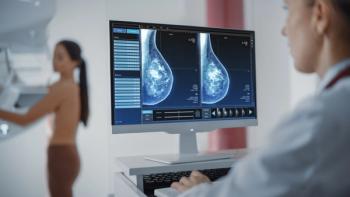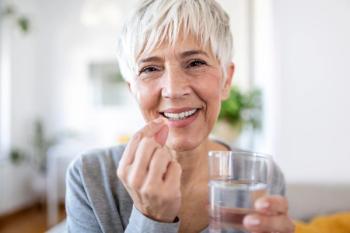
New Breast Imaging Technique Improves Diagnostic Specificity
Near-infrared spectroscopy paired with MRI works with all cup sizes and may minimize biopsies performed due to inconclusive MRI findings after an abnormal mammogram finding.
A small study successfully paired near-infrared spectroscopy (NIRS) with MRI for diagnostic breast imaging in women of various cup sizes whose mammogram findings showed an abnormality, reported Dartmouth engineers and radiologists developing the technique.
Publishing their findings in the February issue of the journal Academic Radiology, the researchers said the new NIRS/MRI interface allowed for improved coupling of the near-infrared fibers to breasts of all cup sizes and lesion locations. They suggested the approach would be most appropriate to use before an invasive biopsy to look for tumors, and it could have particular applicability to women with dense breasts.
Dynamic contrast-enhanced MRI–guided NIRS quantifies total hemoglobin, oxygenation, and scattering in magnetic resonance–enhancing regions, increasing the diagnostic information from magnetic resonance examinations, the authors concluded.
However, the technique is not yet ready for routine clinical use, with more study and equipment modifications needed. Before the method could be adopted, MRI/NIRS must adapt to an individual's body size as well as accommodate a range of cup sizes, emphasized a Dartmouth press release announcing the findings. The equipment must also mobilize and maintain contact with the breast, the release said.
The study, which involved 8 healthy women and 2 cancer patients with a range of breast sizes from cup A through D, showed an ability to increase imaging coverage of the chest, giving providers improved visibility for more difficult-to-see regions, such as the axillary region and medial-posterior breast, the authors reported.
"We found that the new interface allowed us to target lesions more effectively than ever before,” said Michael Mastanduno, corresponding author of the study, in the news release. "Set up time was faster, and images were of higher quality."
Mastanduno said their work represents an improvement from previous designs of MRI/NIRS combinations and shows promise for improving the use of MRI to distinguish between cancer and benign abnormalities.
While prior approaches for MRI/NIRS used parallel plates and relied on custom breast molds for each patient, the engineers at Dartmouth designed a set of 8 adjustable light-transmitting cables to better work with a variety of breast sizes. Next, Dartmouth researchers plan to test MRI/NIRS in women with suspicious lesions.
Pertinent Points:
- Biomedical engineers and radiologists have developed a way to successfully pair near-infrared spectroscopy with MRI for diagnostic breast imaging in women of various cup sizes whose mammogram showed an abnormality.
- This new imaging method has potential to increase the diagnostic specificity of the examination and reduce the number of biopsies performed because of inconclusive MRI breast imaging studies.
- More testing is needed before the approach could be used routinely in clinical practice.
Newsletter
Get the latest clinical updates, case studies, and expert commentary in obstetric and gynecologic care. Sign up now to stay informed.










